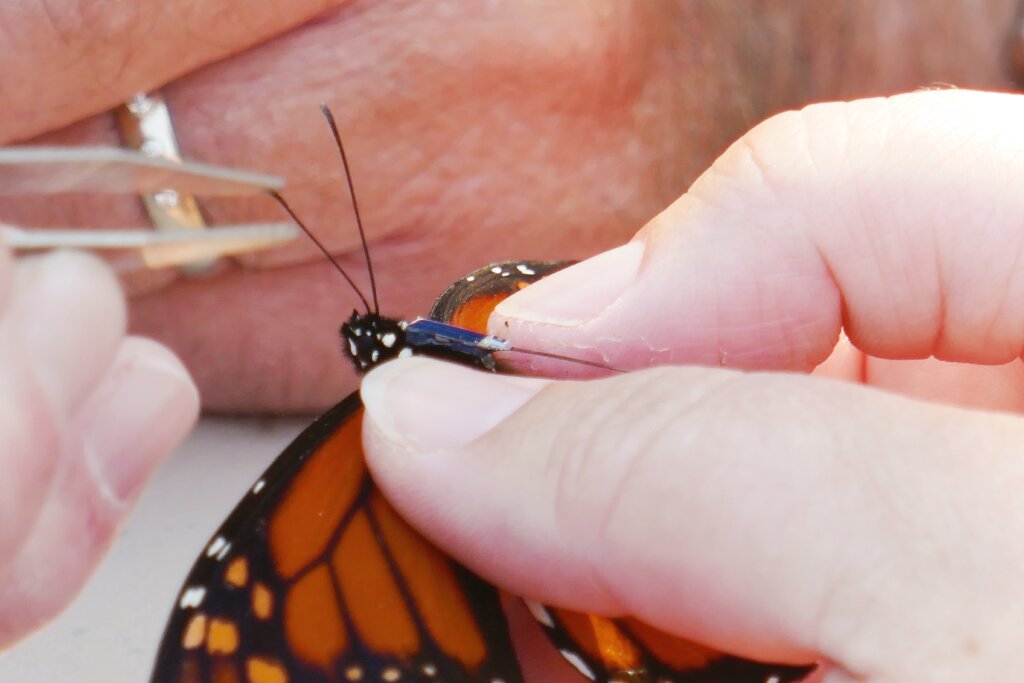CAPE MAY – 2023 has been a revelatory year in the study of the migratory monarch, a subspecies of the monarch butterfly that is an October celebrity in Cape May but whose population has declined significantly over the past 20 years.
A new cellular tracking device, designed and manufactured by Cellular Tracking Technologies of Cape May County, gives local researchers hope that the human-caused drop-off in migratory populations can be stopped, and eventually reversed.
The data collected through new tags on the butterflies will help answer questions unanswerable with the old paper tags, which have been used locally by New Jersey Audubon for decades. What exact habitats are monarchs using the majority of the time? How long are they staying in stopover spots like Cape May? Are they here a day? Two days? And how long does each leg of the migratory journey take?
Brett Ewald, head of the Cape May Bird Observatory, a local group that runs the oldest study of migratory insects in the world, said that answers to these questions will help naturalists understand how to help monarch populations grow.
“Humans are among the biggest causes of wildlife decline in general, so humans have to be the main source of recovery. It won’t happen without us,” he told the Herald.
High-Tech Butterflies Courtesy of a Rice-Sized Tracker
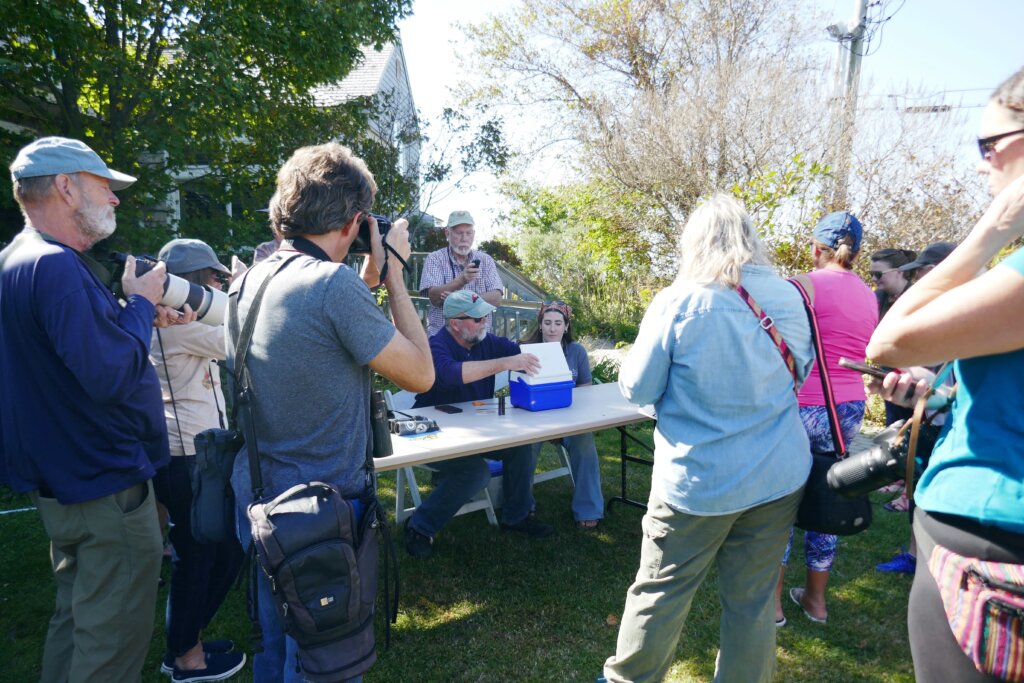
A crowd of over 30 people showed up to a tagging event at the Wetlands Institute in Stone Harbor on a Wednesday in early October to get a glimpse of the new cellular tracker tags in action. Participants, including the creators of the new tech, were giddy with disbelief as monarchs were awakened from a cold-induced sleep, tagged by the careful hand of a nature educator and released fluttering back to the wild.
Mark Garland, director emeritus of the Monarch Monitoring Project, sat at a plastic pop-up table with a small cooler in front of him. He pulled thin envelopes from the blue Igloo cooler, each envelope containing a gently folded monarch. Once outside the cooler, each monarch began to wake up and sat calmly in Garland’s hand.
“We are simulating night in the cooler – at night they become still,” he told the eager crowd. He held a small makeup applicator in his hand; the new cellular tags are affixed to a butterfly’s back with a strong but skin-safe adhesive designed to apply fake eyelashes to a human eyelid. Once the tag was affixed, Garland held up his hand, and the monarch flew free.
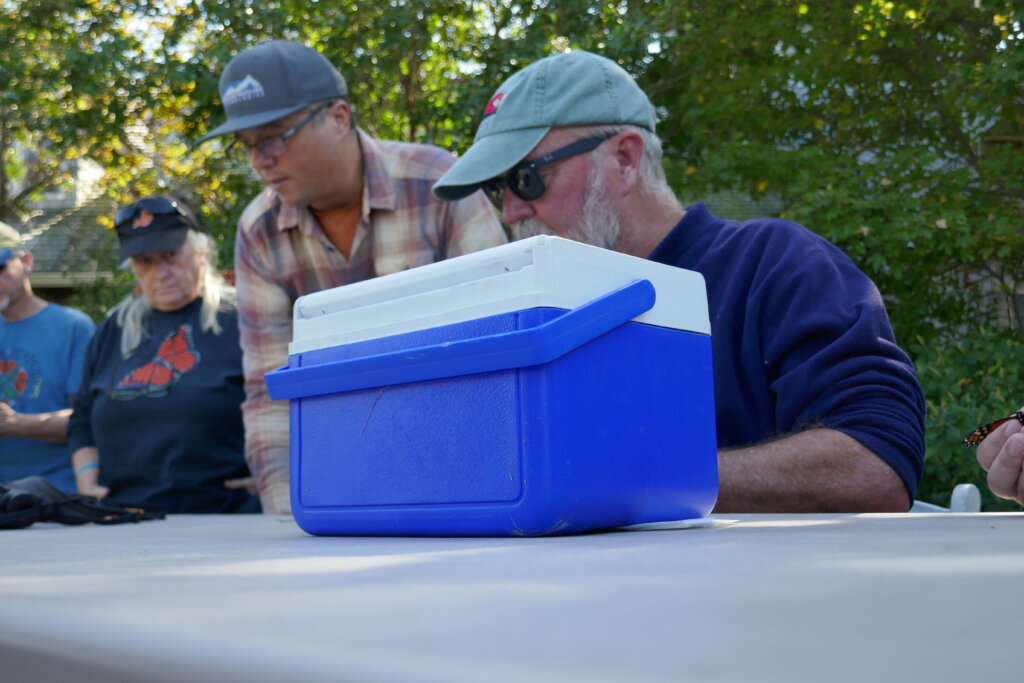
Onlookers grabbed their phones as each insect flew into the cool blue sky over the wetlands. Project Monarch, a mobile app developed alongside the tags, allows folks to scan a 100- to 150-meter range for any tagged butterflies. Sure enough, the freshly tagged and released butterflies showed up on everyone’s app. App users can see the tag name, when the monarch was originally tagged, and how far it has flown from the tagging location.
The new app “crowdsources” the tracking of migratory monarchs, said Casey Halverson, the chief operating officer of Cellular Tracking Technologies. With enough data points, researchers can more accurately map out a butterfly’s journey from the time it is tagged to the time it dies.
Project Monarch, a partnership between the Cape May Point Science Center and CTT, is not technically affiliated with the Monarch Monitoring Project, but they work together closely. The Monitoring Project does not yet tag butterflies with the new cellular trackers; fall 2023 was a “proof of concept” time for the tags. It was a miracle that they were ready in time for the monarch season at all, Halverson told the Herald.

Paper tags – small stickers developed by the University of Kansas in the 1990s – have been the norm for decades. If a butterfly made it to Mexico and a tag was found on the ground or on a monarch’s wing, researchers could know that a Cape May monarch made the journey safe and sound. But the journey itself remained a mystery.
The new trackers once seemed like an impossibility. “It was a pipe dream for the company,” Halverson said. The cellular tags are about the size of a grain of rice – 3mm x 8mm – and weigh just 53 milligrams, said Eric Johnson, the engineer at CTT who headed up the effort. Despite their size, tags are fully equipped with Bluetooth. One thousand of these new tags were manufactured in Erma, at the company’s headquarters by the Cape May Airport.
How Bad is the Monarch Decline?
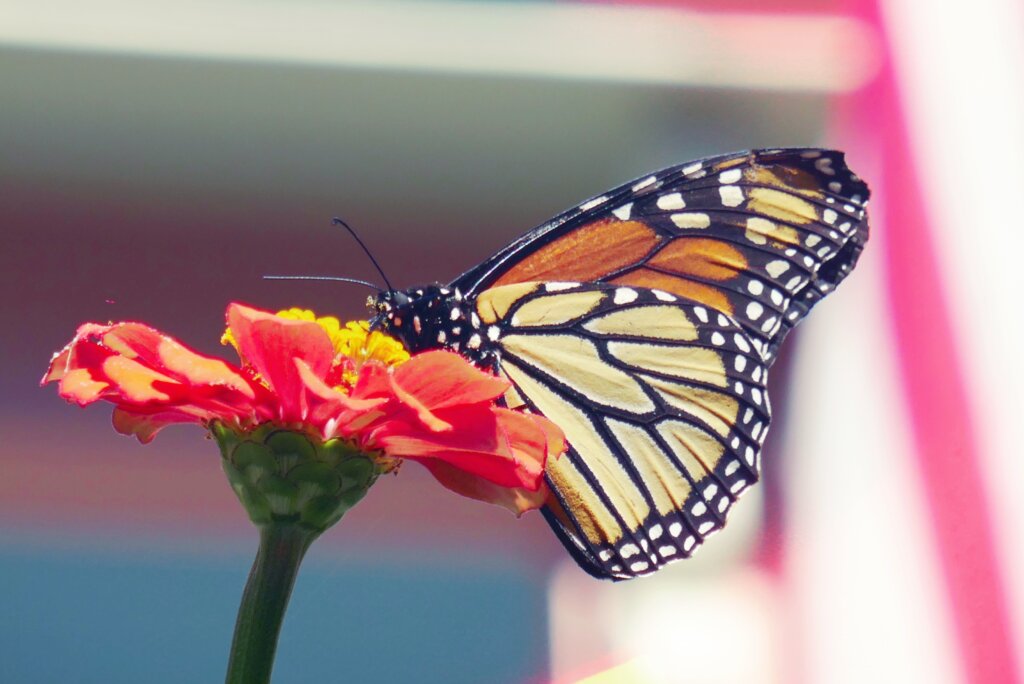
The monarch decline is severe. All of the naturalists interviewed by the Herald for this story say that the population decline is directly related to human-caused climate change.
Most migratory monarchs spend their winters in forests near the mountains just outside Mexico City. This area is a “Goldilocks zone” where millions and millions of monarchs hibernate, said Maya Clark, a monarch field naturalist living at the Cape May Point Science Center. Clark said that the temperatures near these mountains are “just low enough for butterflies to go into a low metabolic state, but not so cold that they freeze.”
Clark is on assignment in Cape May with NJ Audubon until Nov. 15, when she will depart for field work elsewhere. Temporary field researchers are an essential part of the Monarch Monitoring Project. In past years, field research on local monarchs ended on Halloween. Last year, that deadline was extended to Nov. 14 because of an ever-warming fall.
Clark said that local monarch populations have stayed relatively stable despite a bigger-picture decline. She and other researchers like Garland and Ewald say that trouble comes for the monarchs after they leave Cape May.
“Butterflies are spending more time in Cape May than they did before,” she said. “That’s a really bad thing for them. Because it delays their migration. You have monarchs now traveling down the coast during a time that no longer coincides with the blooming season. It’s one of the effects of climate change that we can see right here in Cape May.”
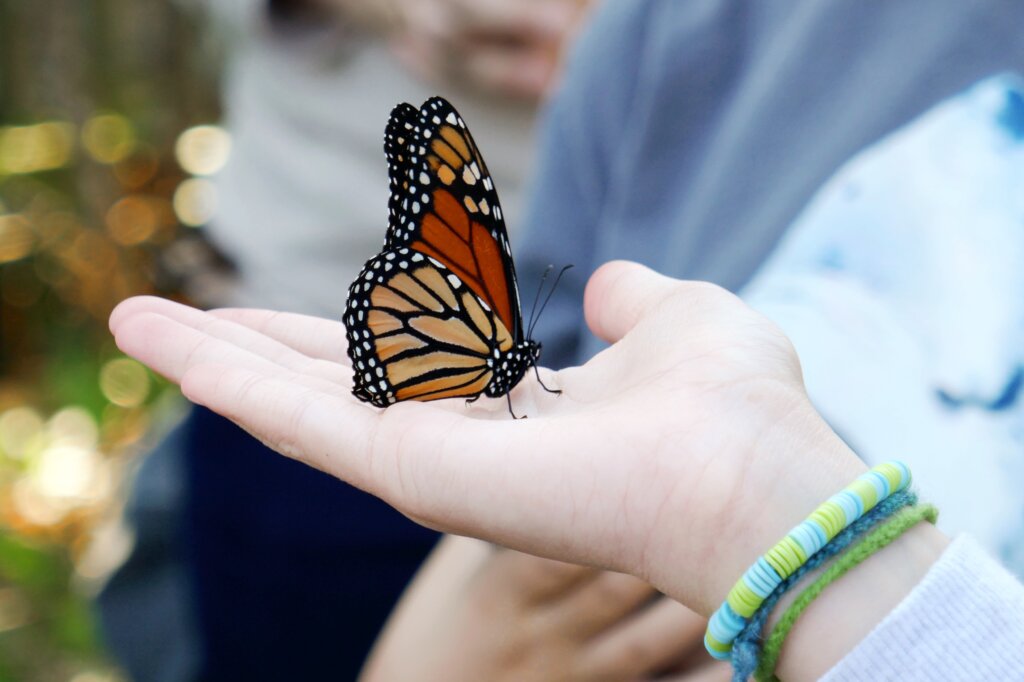
Data from Cape May’s Monarch Monitoring Project was used to prove this in a study published in “Global Change Biology.” Katherine Culbertson, a field researcher in Cape May, published this groundbreaking study, which lays out the troubles of a shifting migration in no uncertain terms.
This later migration means that food is scarcer along the journey south. Monarchs who migrate through America’s Midwest face similar food-related dilemmas. Jack McDonough, a field coordinator with NJ Audubon and a naturalist with New Jersey Fish and Wildlife, said that aggressive farming practices in that region rely evermore on pesticides like glyphosate, found in the common household weed killer Roundup. Garland said that a shift from family-owned farms to larger corporate-run farms has brought with it an increase in pesticide use.
The pesticides kill milkweed and pollinator flowers once found at the edges of crop fields. Milkweed is the primary food source for monarch caterpillars, and pollinator flowers provide nutrients that a monarch needs to survive migratory routes that span hundreds of miles.
McDonough also blamed a more difficult migration on increased development along coastal dunes, like the ones found in Cape May County. The dunes are host to elaborate ecosystems that provide both shelter and food for monarchs.
“Everyone wants a house on the coast, a hotel with a view of the ocean,” McDonough said. “But the problem is that we are destroying and have already destroyed so many maritime forests and integrated scrublands on the interior side of our dunes.”
Garland said that many monarchs stop over in Texas as part of their migration. Here, Garland says that “climate change has caused more severe droughts in recent years. There just aren’t as many flowers.”
At the end of a migratory monarch’s journey, they experience harsher weather in the “Goldilocks zone” in those Mexican forests. “Those mountains are exposed to more erratic weather and temperatures than the monarchs are used to,” Clark said.
Declining food sources at migratory stopping points, shrinking ecosystems along the dunes and in farming regions in the Midwest, and warming temperatures have more than halved hibernating monarch populations near Mexico City.
The World Wide Fund for Nature studies this population each year and publishes the most comprehensive data on the subject. Its research shows that 5.23 hectares of densely packed monarchs were observed in those Mexican forests from 1994 to 2004. From 2004 to 2022, that average fell to 3.26 hectares. Winter 2022 brought just 2.21 hectares of monarchs to fill the forests near Mexico City.
What Can We Do About It? Can We Help Monarchs?
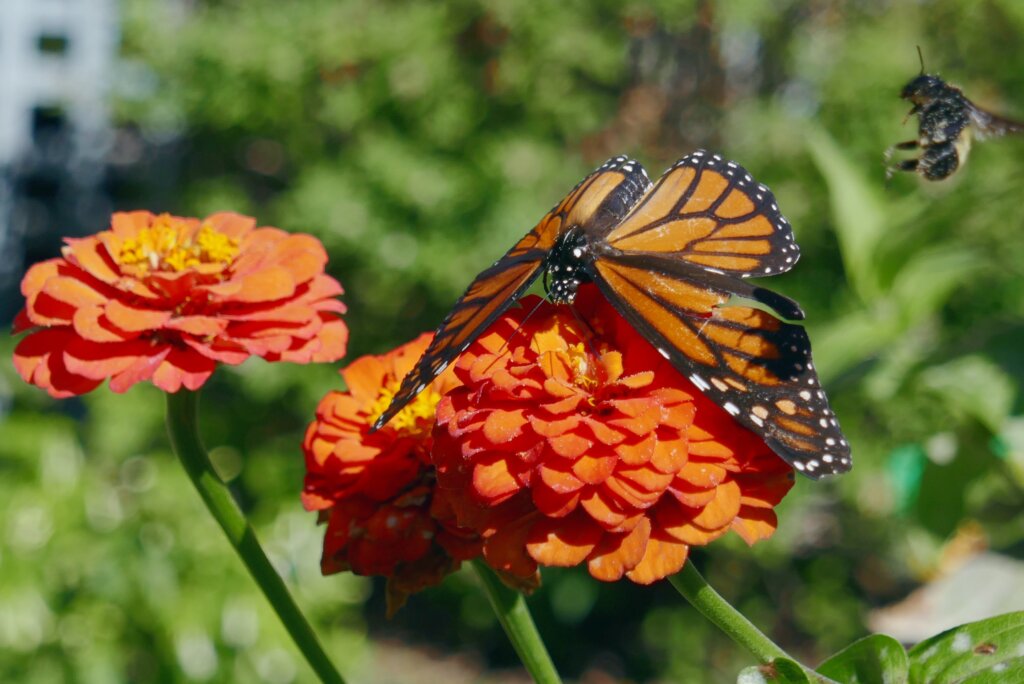
The new cellular trackers, deployed for the first time this fall, give researchers hope that areas with great habitat loss can do something about it. Ewald said that the tags will “allow us to look at the micro-aspects of a monarch’s migration.” Researchers can find out exactly what zip codes in North America are important to monarchs. In those places, researchers and locals can work together to restore plant populations that monarchs need to survive.
“The new technology, while it’s flashy, will be in understanding more direct habitat use,” Ewald said. “But if we don’t have enough people that care about these species, it won’t change the overall result.”
Monarchs are heavily studied, and the monarch stopover in Cape May is a time of celebration. A festival is held in the monarch’s honor each year in Cape May, and Garland said that the butterflies play an outsized role in human cultures across the globe. They are more commonly, and more thoroughly, studied than most insects on Earth.
“But when monarchs are declining, we know there are problems in insect populations that we don’t even know about,” Garland said.
Clark said that migratory monarchs are a “canary in a goldmine” that warn of wider insect population problems.
McDonough, the field researcher with NJ Audubon, said that there are several things that those sympathetic to the cause can do to help monarchs recover.
- Plant milkweed and fall-weather flowers. Every researcher interviewed by the Herald said that planting milkweeds, asters and other monarch-friendly plants makes a huge difference. Garland said that community initiatives across America to plant more – in schools, at municipal buildings, at rest stops, in backyards – have made a difference in staving off further decline. Even if you have just a small plot of land, plant something!
- Download the free Monarch Watch mobile app. This app was developed side by side with the new trackers. Anyone can help the study of monarchs by pinging nearby monarchs. The app has a game-like functionality via a leaderboard that tracks users with the most butterfly pings. The data collected by users will help long-term monarch study.
- Visit the Monarch Butterfly Biosphere Reserve in Mexico. McDonough said that increased logging in these forests has contributed to population loss. “You basically have the entire eastern Atlantic population of monarchs ending up in one place during the winter. Your presence there boosts the economy and gives those communities and the government an incentive to protect the monarchs,” he said.
- Resist development on Cape May County’s dunes. Dunes play an important role in the migration of the monarch butterfly. Aggressive development right on the dune line harms those vibrant ecosystems, McDonough said, and makes the dunes more dangerous for monarchs. If you live in a town with an environmental commission, like Avalon, attend a dune grass planting event if you can.
- Encourage nature education. O’Shea, the environmental educator at the Wetlands Institute, said that tagging events and other hands-on research events inspire empathy for wildlife in school-aged children. She works with local schools, like the nearby Stone Harbor School, to get hands-on time with monarchs.
What’s Next?
Fall 2023 has been a huge year for the study of the migratory monarch. The first cellular-tagged butterflies in the world are taking flight out of Cape May this autumn. These first flights are important, but the tags are not yet used en masse by the Monarch Monitoring Project, which is still using paper tags this fall.
Ewald, the director of the Cape May Bird Observatory, said that he hopes the Monarch Monitoring Project, run by the observatory, can use the cellular tags next fall when manufacturing has ramped up. Usable, actionable data might be years away, but the hardest part – making a high-tech, Bluetooth-enabled cellular tracker smaller than a grain of rice – has been done.
Contact the author, Collin Hall, at chall@cmcherald.com or 609-886-8600, ext. 156.

